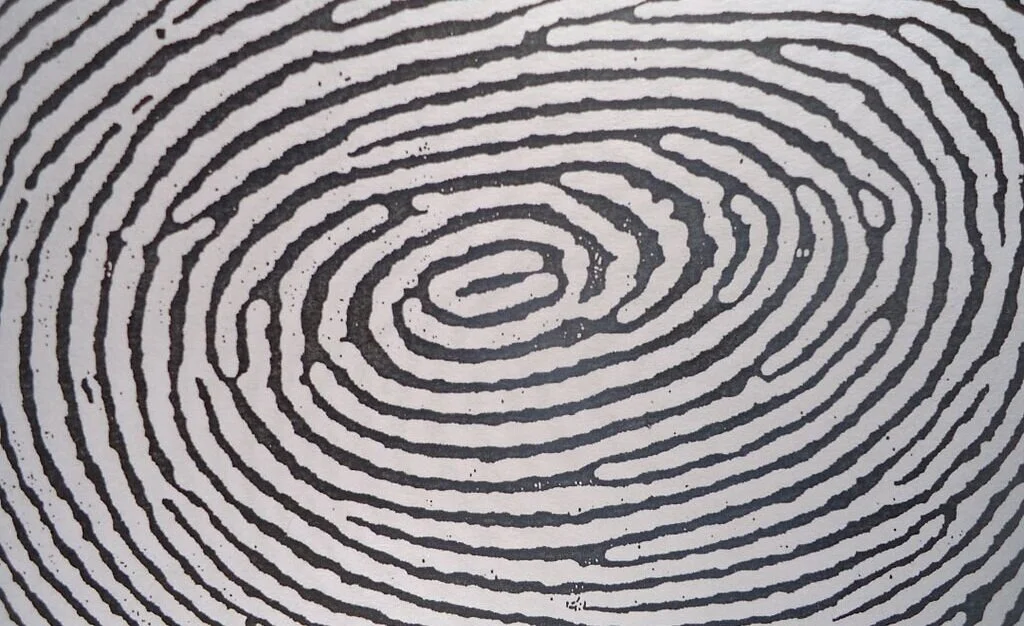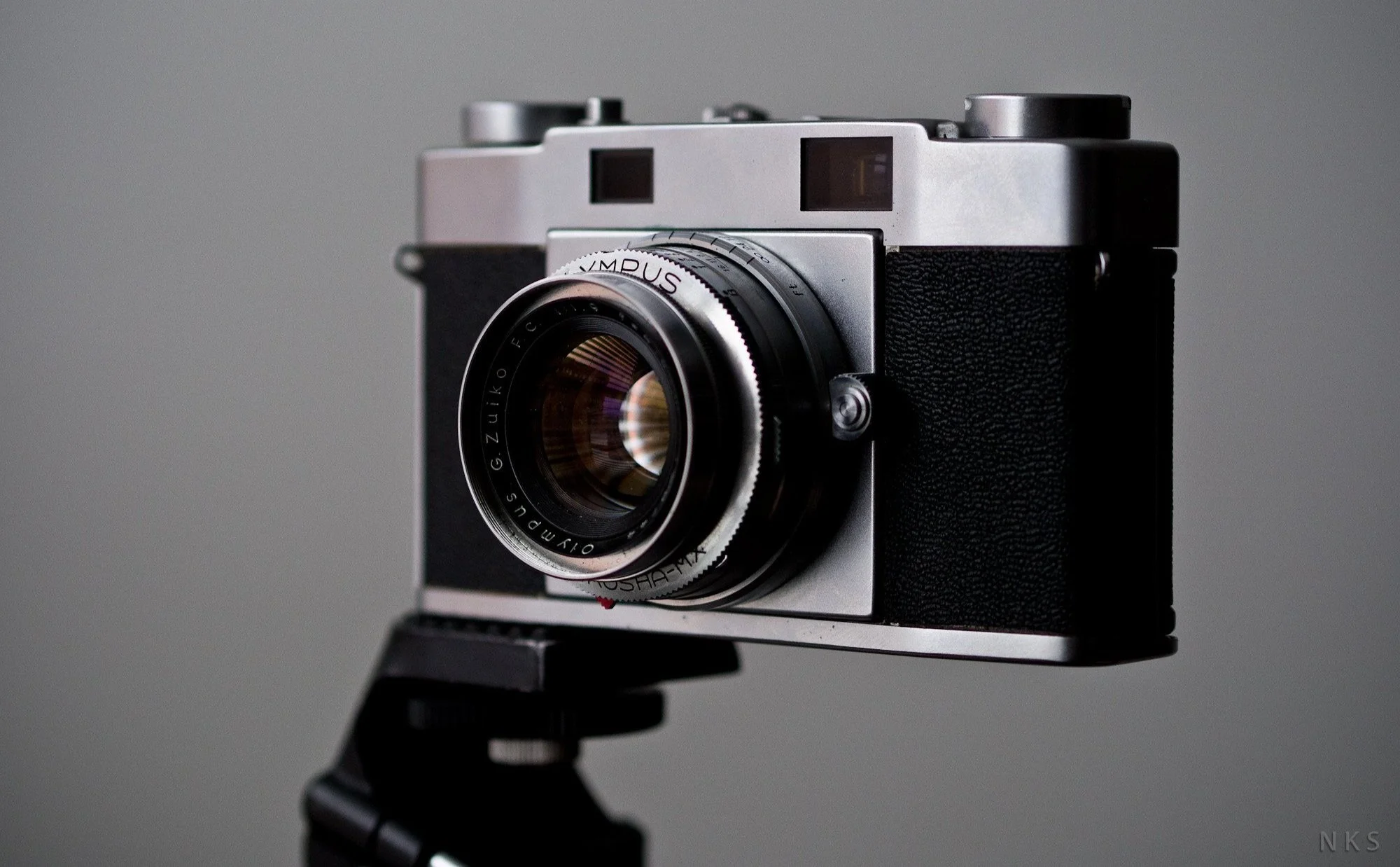The Curious History of Women Fingerprint Experts
When we think of early fingerprinting experts, we imagine Sherlock Holmes, magnifying glass in hand and deerstalker atop his head, sleuthing around potential crime scenes and dusting for prints. However, these “novelty” images obscure a scientific, troubling—and curiously gendered—history.
In the 19th century, the rapid growth of cities and rail travel changed policing from recognizing familiar local faces to identifying an increasingly anonymous, mobile group of potential offenders. Emerging technologies such as photography offered a means of documenting faces in mugshots to curate so-called “rogues’ galleries.” Then, by the turn of the 20th century, new methods promised to distill a range of visual information into a code to be managed, organized, and later retrieved.
First, police used the “Bertillon system,” which recorded front and profile photographs alongside anthropometric data: age, height, occupation, nationality, hair color, beard color, teeth condition, and various head measurements. But this too had its shortcomings for the police; appearances and measurements could change. Fingerprinting, a new method, promised permanence.
Fingerprint identification was the product of turn-of-the-century eugenics and colonialism.
Fingerprint identification was the product of turn-of-the-century eugenics and colonialism. In the 1890s, Francis Galton predicted that the arches, whorls, and loops of a fingerprint could be assigned numbers and cataloged. Informed by his eugenic ideologies, Galton injected racialized meaning into the science, aspiring to apply fingerprinting to “identifying persons of other races … [whose] features are not readily distinguished by Europeans”. In the same decade, imperial administrator Edward Henry—alongside two Indian statisticians, Hem Chandra Bose and Azizul Haque—implemented a fingerprint classification system in policing and civil transactions in Bengal. As historian Chandak Sengoopta has argued, colonial officials inscribed racialized moral meanings into fingerprinting, making it “a weapon to combat what they regarded as the innate duplicity of Bengalis”; it promised to identify and control bodies marked as “Other.” Henry later returned to London to enter metropolitan police leadership, where he established a fingerprint bureau in 1901. Having honed these surveillance technologies in an imperial setting, police and corrections departments sought to apply them to criminalized populations in the metropole.
From these beginnings, women claimed fingerprinting expertise. In 1904, British police officers traveled to the World Fair in St. Louis, Missouri. During their visit to the U.S., would-be detective Mary Holland engaged the officials to teach her fingerprinting. Holland caught the knack for this science and journeyed to Scotland Yard to further her knowledge, later providing specialist support to the Washington D.C Navy Identification Bureau and testifying in the 1911 Illinois trial People v Jennings, which helped to establish fingerprinting as expert testimony in the courtroom. She earned the nicknames “Sherlock Holmes in Petticoats,” “the mistress of mysteries,” and “world-famed scientific investigator” in the course of becoming one of the foremost authorities on the technology of her day.
Holland was not the only female investigator to capture press attention. Danish criminologist Ingeborg Charlotte Hellner-Nielsen—introduced in one newspaper as a “the girl sleuth who trained on Penny Dreadfuls”—made a headline-grabbing visit to the U.S. in September 1922. Her trip aimed to promote the idea of an international directory of fingerprints. The New York Tribune noted Hellner-Nielsen’s view that women were particularly adept at fingerprint work because “good eyesight, painstaking attention to details, infinite patience and absolute accuracy” were “qualities to be found more readily in women than in men.”
Women’s fingerprinting expertise extended beyond a few exceptional “female sleuths,” however. As collecting and storing information became crucial to growing government bureaucracies, agencies looked to women workers as a consistent, low-waged labor pool to fill new clerical jobs. In the office, women were associated with modern technologies, such as the typewriter and calculation machines, which paved the way for women’s key role in early computer science documented in the work of historian of technology Mar Hicks. Certain talents were gendered feminine, namely repetition, dexterity, and attention to detail. Identification work combined these very skills and technologies.
In 1927, the Los Angeles Times joked that the New York Bureau of Identification in Albany, one of the largest in the world, was “manned” by women. Florence De Forest headed the Bureau from its beginning in 1893 and was succeeded, in 1914, by Clara Parsons, who engineered the shift from Bertillon to fingerprinting. Throughout Parsons’ 22-year tenure, “women’s eyes looked through microscopes at the prints fingers made on clean paper,” women’s fingers coded this information into numbers, and “women’s hands kept classified 300,000 cards” in a complex system of filing.
Women’s leadership of this technology enabled federal and local agencies to police residents in new ways. By collecting incarcerated people’s fingerprints, the state sought to identify repeat offenders, believing they deserved more severe sentencing than first-timers. This contributed to the transformation of sentencing from the response to a single incident to disciplining an individual based on “character.” Significantly, New York City courts first applied the technology to document the 12,000 accused sex workers who passed through the Women’s Night Court between 1910 and 1913. The New York State Bureau of Identification managed a huge number of individuals’ records, and they received 64,000 prints in 1930 alone. As controllers of this information, women wielded substantial regulatory authority. As fellow New York fingerprint expert Gertrude Sullender explained in 1918, “once we get a man’s fingerprint no pseudonym or disguise will ever serve to hide him again; from that time on his life is bound to be an open book, all cataloged and classified ready for reference.”
“Female fingerprint experts occupied two spheres—science and surveillance—in which we are unaccustomed to seeing early 20th-century women.”
As the 20th century progressed, government agencies increasingly grounded their power in the accumulation of knowledge about their residents. Fingerprinting expanded beyond corrections to the postal service, birth registration, immigration, police departments, and the Federal Bureau of Investigation. When many of the formal accolades of scientific success—college degrees, training programs, awards, publications—discriminated against or excluded women, the women of the New York Bureau conducted work that was increasingly seen as highly scientific. One report named Parsons “the foremost authority on this subject in the country.” Her obituary in the journal Correction went even further, describing “the loops, whorls, and the vagaries of those identifying minute lines on the ball of thumb and fingers constituted the world in which she lived; a world that she made her own by right of intelligent conquest.” The language of exploration, usually the preserve of male scientists, was applied to Parsons. She was the “grey-haired nemesis of gangdom,” with “the satisfaction of having police departments all over the country turn to her and her errorless files.”
Following Parsons’ sudden death in 1936, she was succeeded by a male director. Thereafter, the New York State Bureau was never again a feminine domain. Yet, opportunities remained for women in fingerprinting at the mid-century and, in 1942, the International Association for Identification elected its first female president, Marie M. Grott, who headed an identification bureau herself in Indiana; an additional eight women have held the presidency to date.
Although figures like Sherlock Holmes or FBI director J. Edgar Hoover and his G-Men dominate the history of identification science in the public imagination, for a period, women were amongst the leaders of this technology. Female fingerprint experts occupied two spheres—science and surveillance—in which we are unaccustomed to seeing early 20th-century women. Yet as much as their work was exceptional, it was also incredibly unexceptional; theirs was the everyday work of a state seeking increasing knowledge and authority over its residents.
Further reading
Simon A. Cole, Suspect Identities: A History of Fingerprinting and Criminal Identification (Harvard University Press, 2009).
Michael Harling, “Origins of the New York State Bureau of Identification” (2000) on the New York State Division of Criminal Justice website.
Mar Hicks, Programmed Inequality: How Britain Discarded Women Technologists and Lost its Edge in Computing(MIT Press, 2017).
Chandak Sengoopta, Imprint of the Raj: How Fingerprinting was Born in Colonial India (Macmillan, 2003).
Image credit: Elongated whorl without the deltas in a right thumbprint by Metronomo, 2013 (Wikimedia Commons | CC BY-SAY 4.0)






